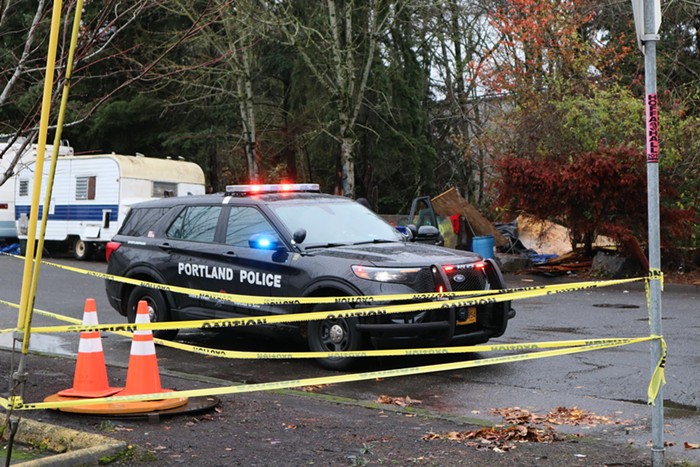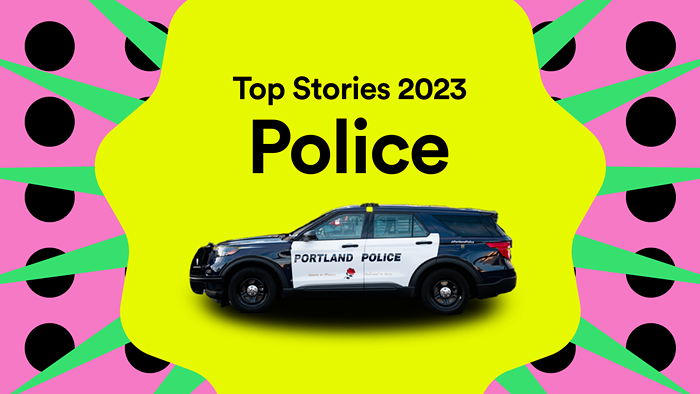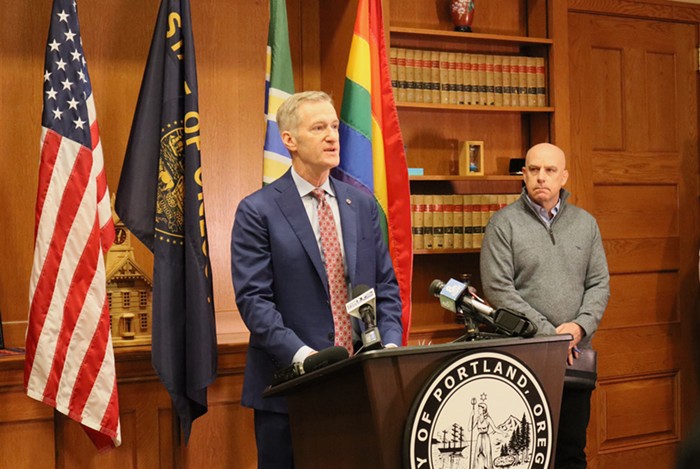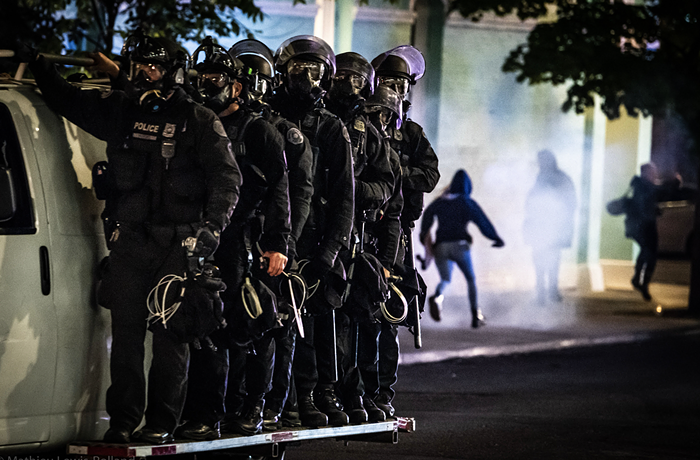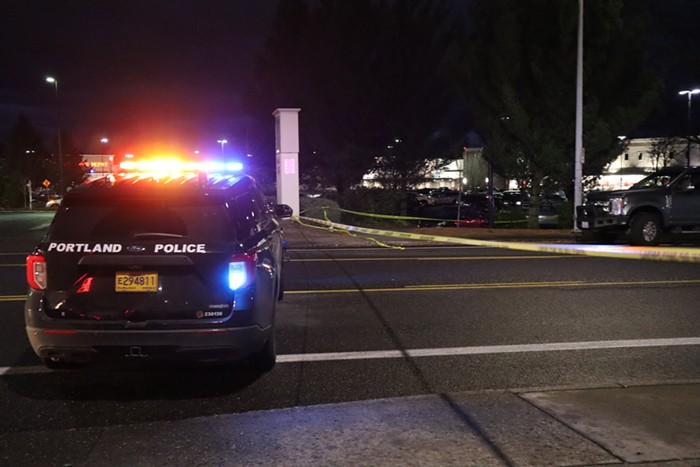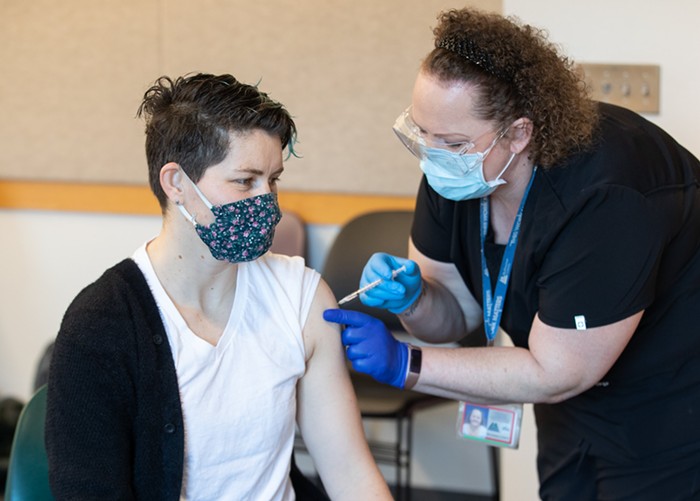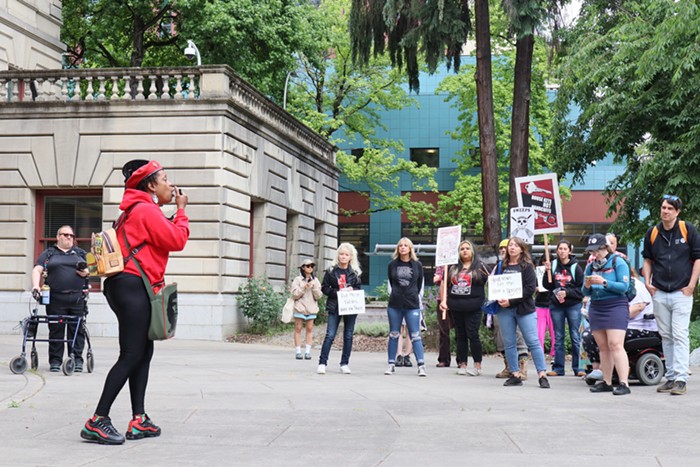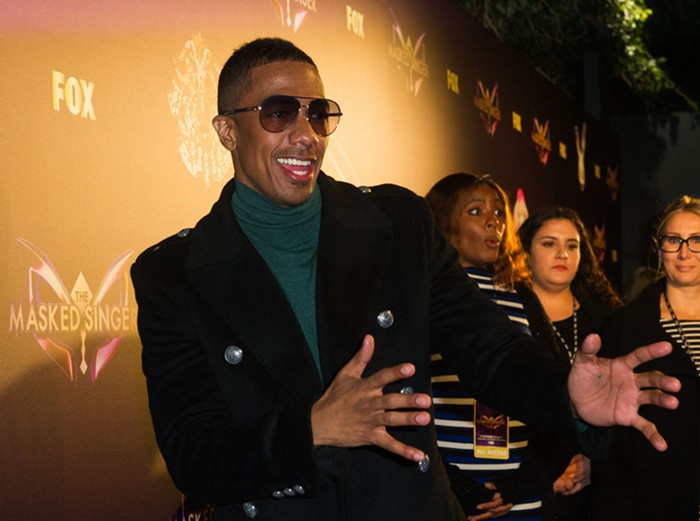
[The following is an editorial opinion piece written by Avery Panganiban, an activist and graduating senior at Portland State University studying Political Science. Here she explains how PSU's response to the death of George Floyd by Minneapolis police officers stands in stark contrast to the way the university has addressed racism and violent policing on campus. —eds.]
The homepage of the Portland State University (PSU) website features an infographic showing that 35 percent of the student body are “of diverse backgrounds.” Nearly every page of the university's website shows an image of a student or faculty member of color, and has an entire page devoted to the claim that, “Diversity, equity, and inclusion is not only a value and a mission of Portland State University, it is the essential framework of who we are and what we do as an institution and community.” The newly-renovated and renamed Fariborz Maseeh Hall even features art by several artists of color, from Wendy Red Star to Hank Thomas Williams, conveniently placed adjacent to the Admissions Department and free art gallery, and on the route for touring students and donors.
Considering the emphasis PSU seems to place on diversity and inclusion, the lack of any concrete response to the nationwide protests fighting police violence against Black people is questionable; especially considering many of the Portland-area protests have taken place less than a quarter of a mile from the school’s campus. The first public response comes from the new PSU President, Stephen Percy, is tucked away on the school's website—the only notification that a statement was made at all can be found on PSU’s Twitter (which only has 2,700 followers to PSU’s 26,000 students).
After five consecutive days of protesting in Portland, PSU students received a statement via email:
“We staff members from Diversity and Multicultural Student Services (DMSS) and Student Affairs are angry, heart-broken, grieving and demand meaningful change. We are grieving the murders of George Floyd, Breonna Taylor, Tony McDade, and Ahmaud Arbery. We say their names along with Jason Washington, because we know that anti-blackness and anti-black violence does not stop at the boundaries of Portland State University. This is not a moment to be silent. This is a moment instead to make clear our commitment to taking up the work that will support long-term change within Student Services for the safety and success of our students. Moving forward, we will engage in anti-racism work by naming institutionalized racism and anti-blackness at PSU and addressing it head-on. Our central goal is to amplify and advocate for student voices, and we are committed to this in our anti-racism work as well. Violence like these most recent murders happens because of systemic oppression and unchallenged white supremacy. We acknowledge that we are raising the names of only a few black lives lost to white supremacy-fueled violence and that there are countless others that we have yet to raise up and many community members, including PSU students and staff, who have experienced anti-blackness and racism.”
The email closes with the names of leaders from the Queer Resource Center, Women’s Resource Center, Center for Students with Children, and others in charge of the resource centers which fall under the umbrella of diversity and multicultural student services. This statement also promises an action plan will be available this Fall, and will “ensure long-term follow through.” This email has not yet been acknowledged by the school’s higher-ups, whose silence suggests an unsurprising comfort in letting marginalized people do the work for them. While the DMSS response is much closer to being sufficient, there is no specificity from either the President or the DMSS on exactly how PSU’s promise to improve will take shape.
There is, however, a response from popular local rapper Aminé, who is only one of many who responded to the school’s vague messaging with criticism of the school’s armed police force:
🧢🧢🧢 students & faculty voted against campus police being armed and now jason washington is dead because you didn’t listen https://t.co/Nyd53AiZ4M
— Aminé (@heyamine) June 1, 2020
The incident in question calls back an ongoing debate between PSU’s decision-makers and its students and faculty. In July 2015, the Portland State Board of Trustees voted to arm Campus Public Safety Officers (CPSO); three years later, an armed campus police officer shot and killed Jason Washington, a 45 year-old Black Navy veteran and postal worker. PSU students and faculty were vocally opposed to arming campus officers in 2015, and continued to fight the policy when it was announced that CPSO would undergo an investigation conducted externally by campus safety consultants Margolis Healy and Associates. As they waited for the investigation’s results, the PSU Student Union delivered at least 6,100 signatures to the school board in support of three demands: immediately disarming campus officers, firing the two officers who shot Washington and creating a permanent memorial for Washington.
There is a memorial for Jason Washington, but it was not put up by PSU. It was started and continues to be maintained by his family and friends—flowers, American flags, and notes from his children cover the tree next to where Jason was murdered. It used to extend onto a concrete pillar and the doors of the Broadway student housing complex, but PSU removed all of the memorial materials that touched school property.

It is unclear whether the two officers involved in the shooting, James Dewey and Shawn McKenzie, were fired or resigned; the other two demands from the PSU Student Union remain unmet.
The report from Margolis Healy recommended that PSU’s police remained armed, as “disarming CPSO officers would make PSU an outlier amongst its peers and would represent an abnormal step with respect to campus safety models in higher education.” A school that boasts of being “one of the nation’s most innovative universities” uses the precedent set by other armed campuses as justification to blatantly ignore an entirely preventable murder; this perfectly demonstrates PSU’s hypocrisy.
Unfortunately, that’s only one example.
PSU’s Black Studies program was the first of its kind in the Pacific Northwest, and marked a major step in the right direction over 50 years ago. Since then, however, PSU has allowed its Black Studies department to remain woefully underfunded. Dr. Ethan Johnson, the department chair of the Black Studies Department, said in an interview for the Portland Vanguard that “[The university] does brand itself on being the most diverse place; often they put Black people on the front cover of the website... It uses Black people to represent itself but has nothing in place to support Black people, staff, administrators, faculty and students. Nothing.” He also noted Black Studies professors have a notoriously difficult time being granted tenure, and that the department is not at all consulted on ways to attract, retain, or support Black students.
There are clubs and student groups for students of color. At a commuter school like PSU, however, that only goes so far. Only 3 percent of PSU’s student body is Black, and on a campus of over 20,000, it’s easy to feel invisible. Since the start of the COVID-19 pandemic, PSU has transitioned to being entirely online— now students are on their own. Graduating senior Moxxy Rogers is experiencing that now.
“I am a Black person going through a really hard trauma, and I have literally no Black friends here to confide in,” wrote Rogers in an email. “I rarely see [Black students] in the spaces I frequent, which happen to be writing, art, and mentor spaces. The absence of Black people only adds to the isolation I feel. I keep trying to start on homework and then the ghost of my ancestors creep into my fingertips and I can't move. I think of George Floyd's mother and my stomach curls in on itself. I carry myself through his last breath and something snaps in my chest. I can't see my work through my tears.”
Despite all its flowery words about community advocacy, PSU has left its students of color incredibly vulnerable. COVID-19 has hit communities of color the hardest. Campus is constantly surrounded by heavily armed police. This is not the time for PSU to continue its apathy.
“The university knows that Black students are not graduating, and they know that Black faculty and staff have been leaving and they know that they leave because they are not welcome,” Johnson told the Vanguard. “They have known this for a long time and when they don’t do anything about it substantively—to me...I would say it’s intentional. Inaction as an action is just as intentional.”
PSU has an unearned reputation of diversity and inclusion—a reputation earned by ad campaigns and catchy slogans, not through any substantial action to care for their students of color. If PSU plans to continue feigning equality to coax money from white-guilt-plagued donors and entice young activists to become students, the school needs to make serious changes.
The university needs to visibly speak up and speak out against the state-sanctioned violence pervasive in this country, not leave the campus’ resource centers to fix the President’s well-hidden mess. The Board of Trustees must vote to disarm their campus police. The school needs to fund the Black Studies Department, as well as all of the other departments whose curriculum centers around the non-white experience, and integrate all of these departments into the mandatory curriculum. PSU needs to stop tokenizing students of color in promotional materials and instead ensure those very students have the resources they need to thrive. They must hire more people of color, not only as educators, but also as school policy makers. Most importantly, they need to make time and space for the people of color who are already part of PSU to voice their concerns, and ensure that they are taken care of. Only then will the school begin to scratch the surface of the promises of equity and advocacy for all who set foot on PSU’s campus.
